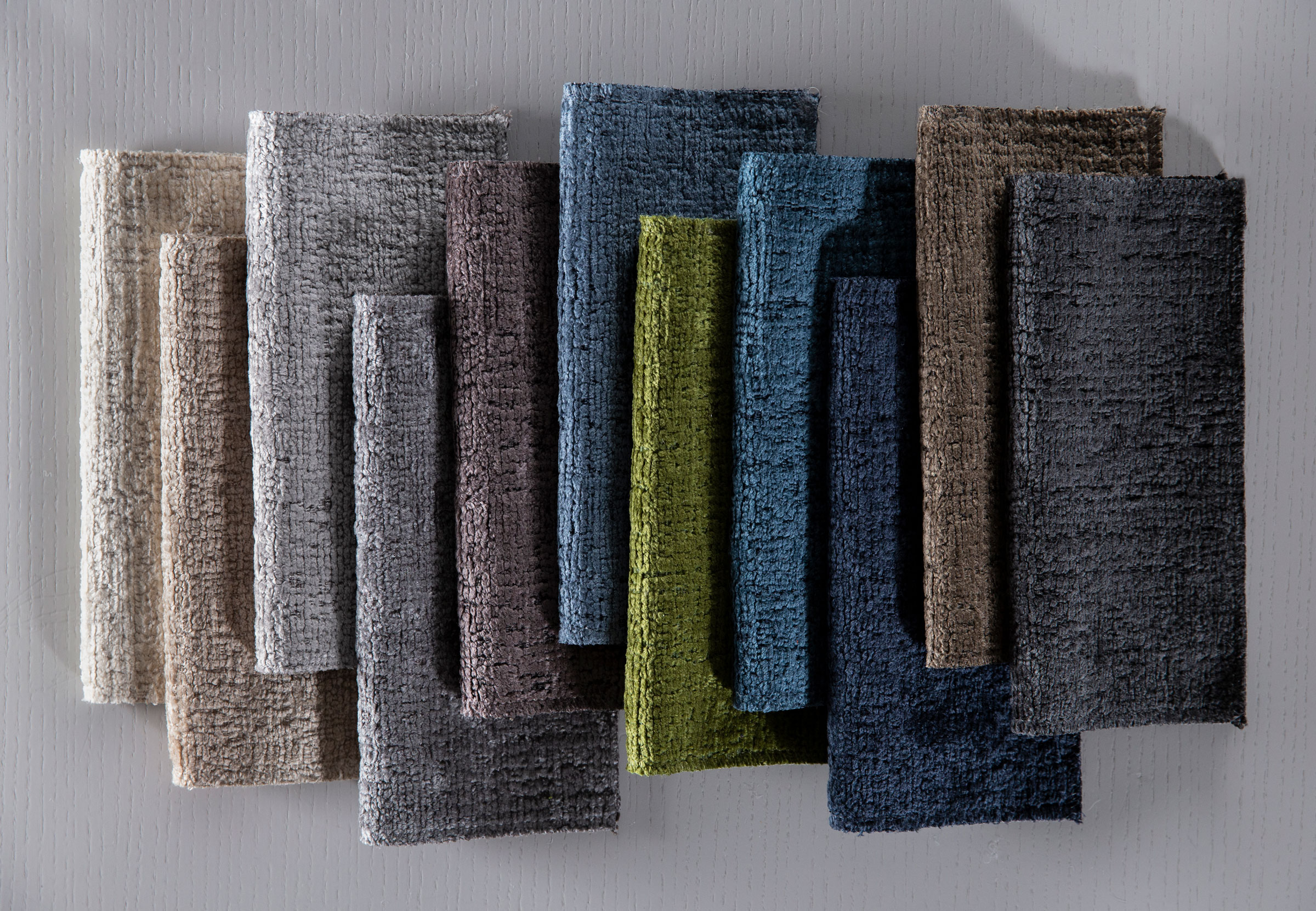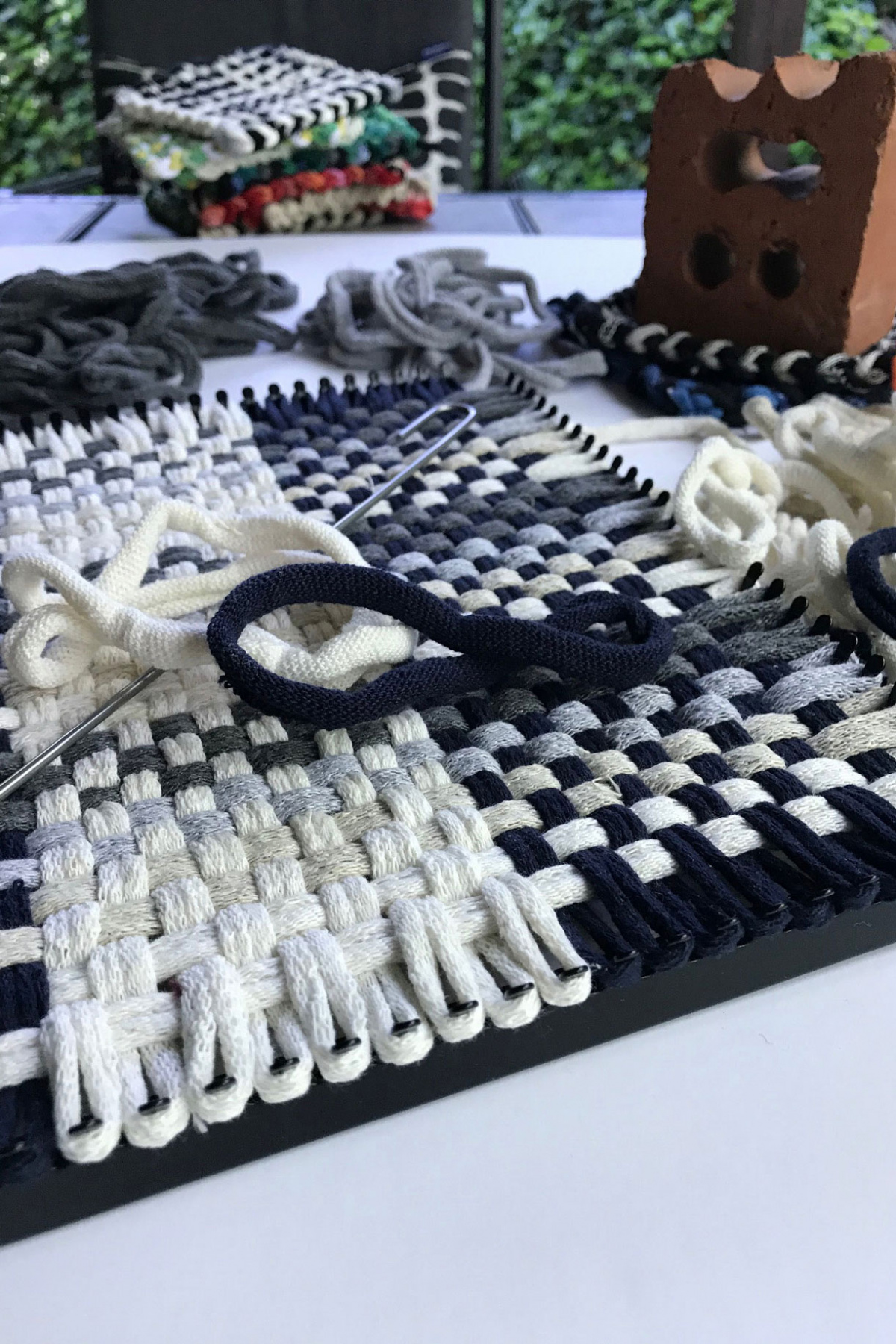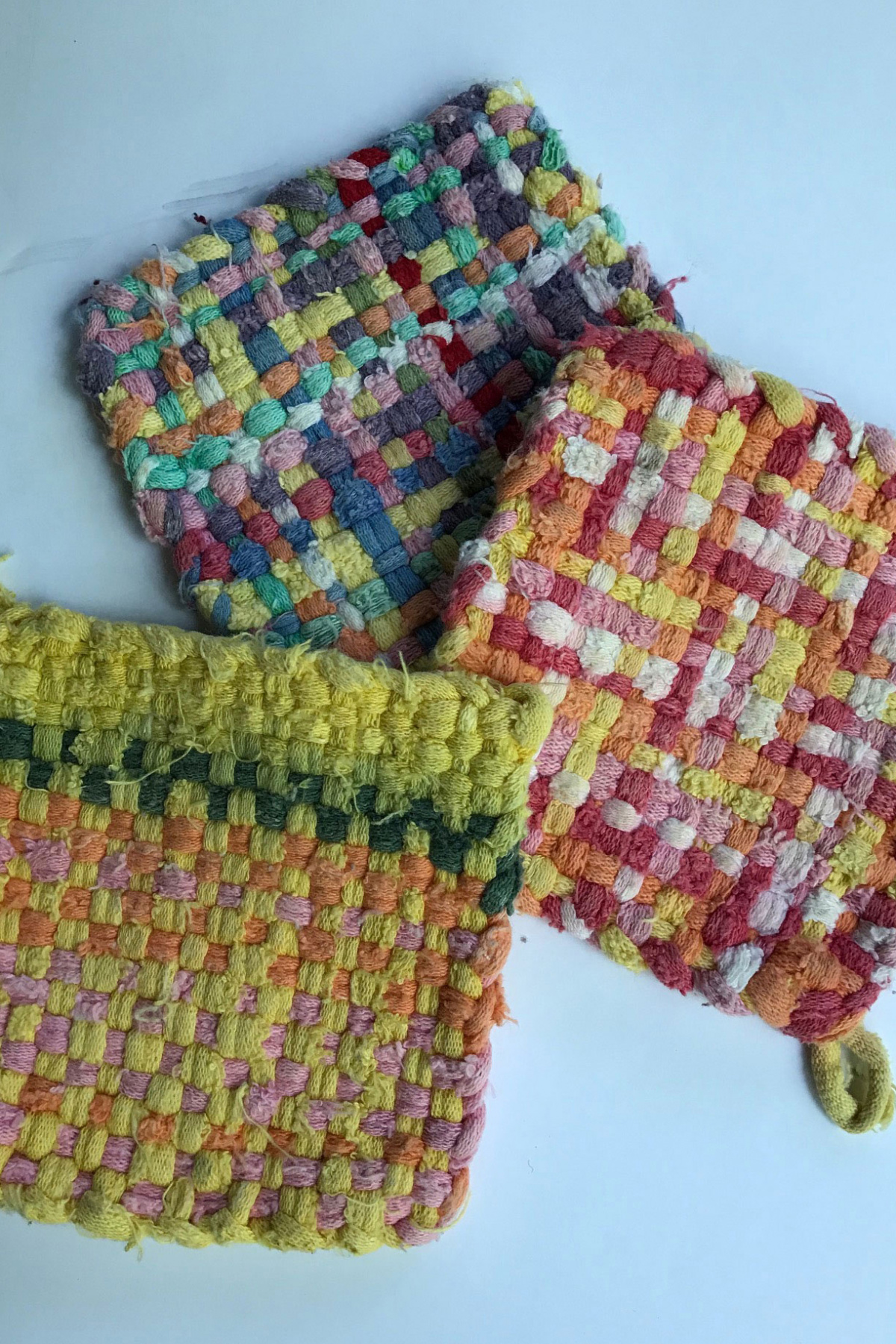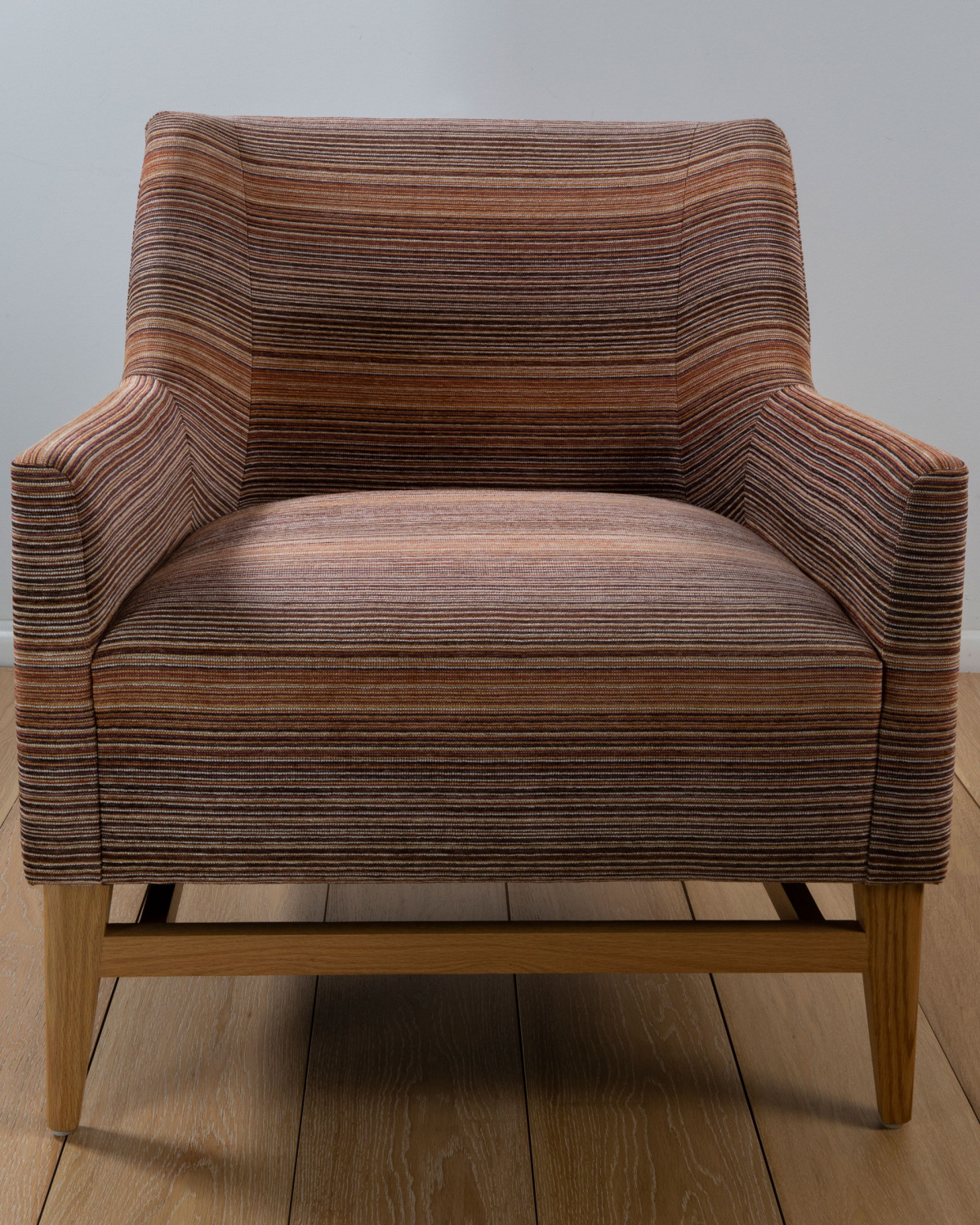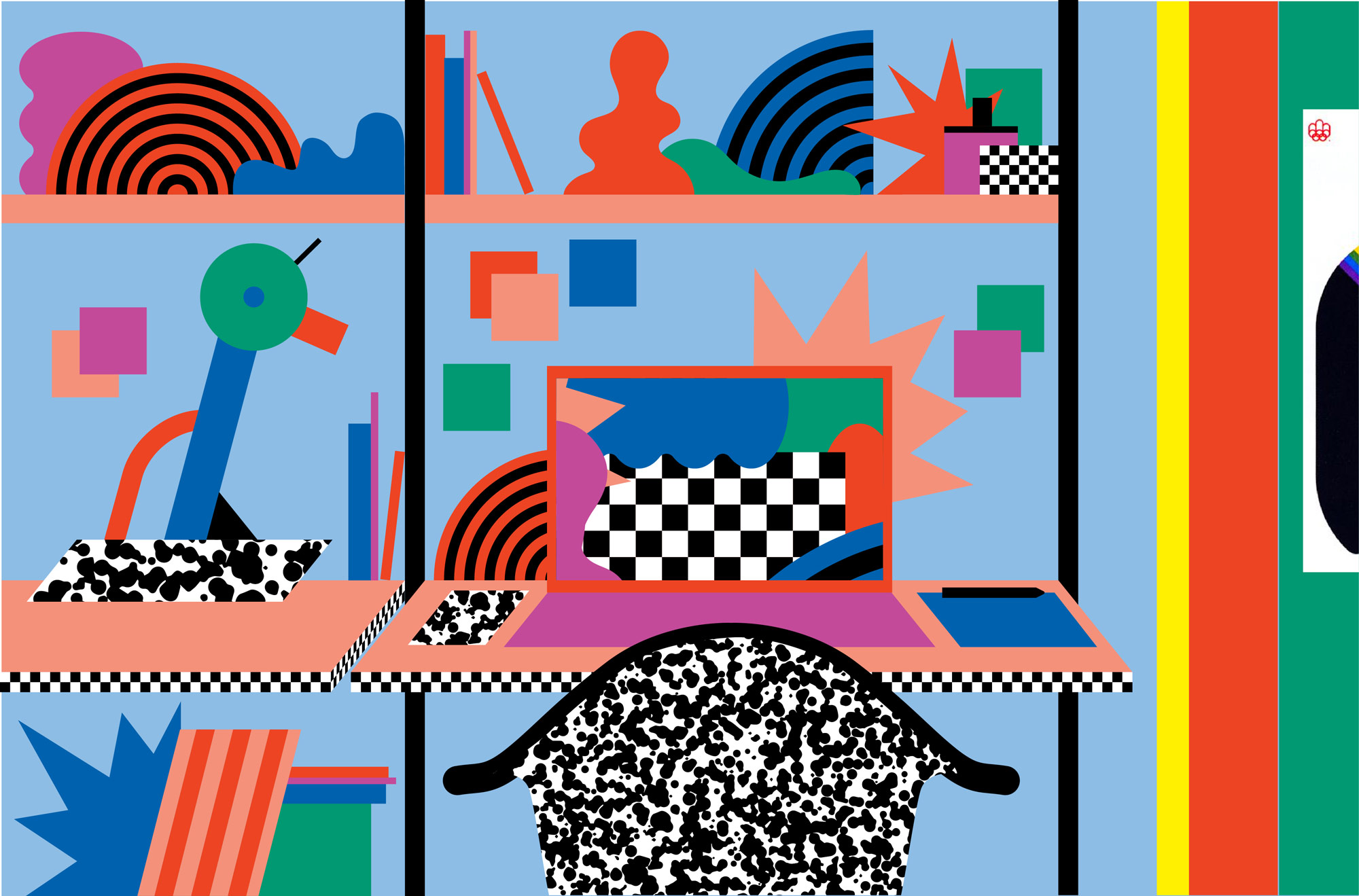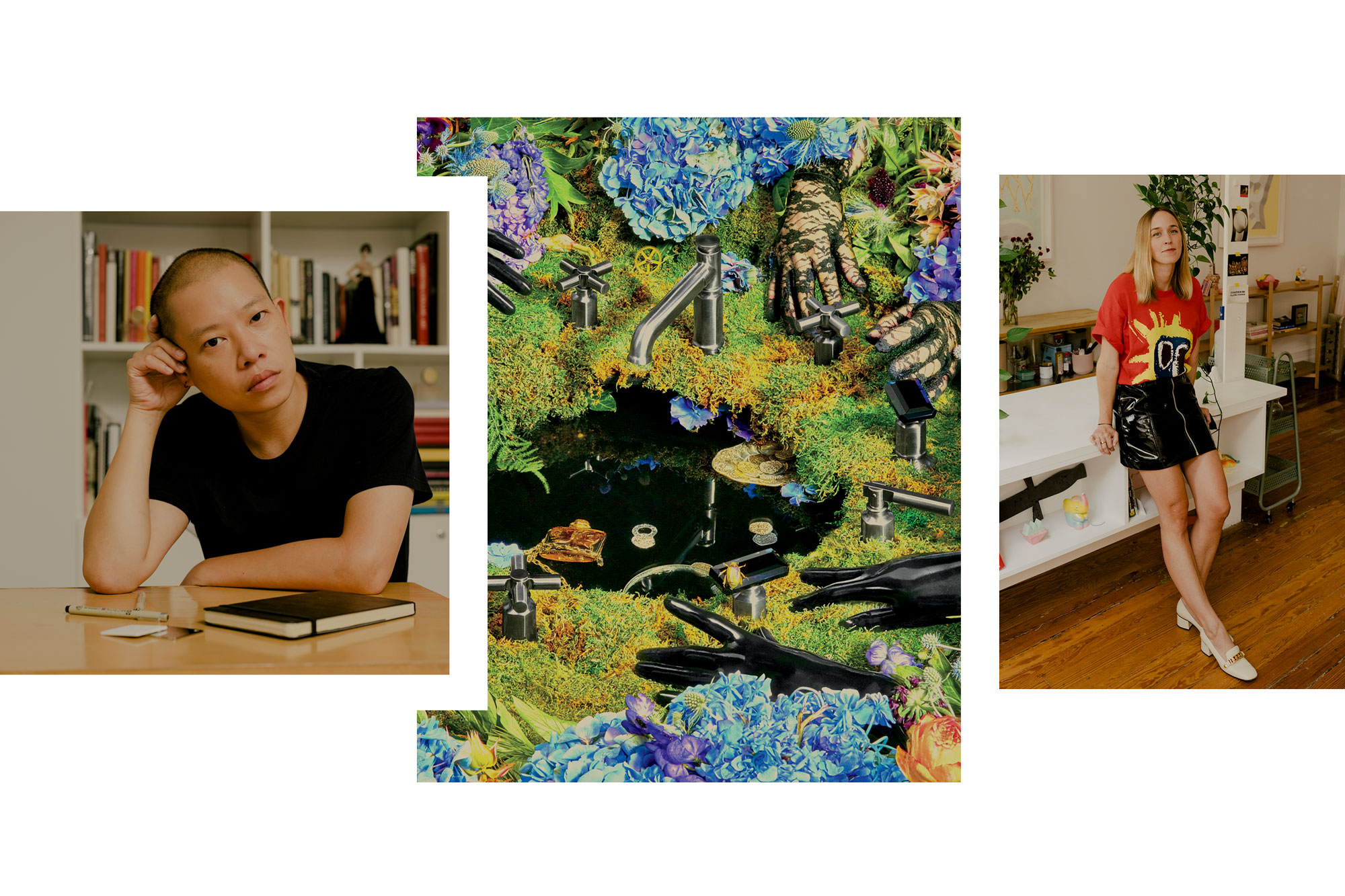Mary Jo Miller is hands-on in all of her creative projects. “Corporately, they want me to be more paper-driven, like a design brief,” the Vice President of Design and Creative Direction at HBF Textiles says. But that’s just not Mary Jo, who would rather test new color concepts making potholders at home than emailing back and forth about it.
Here Mary Jo explains how to tackle that intimidating start of a new creative project, from small personal designs that lead to big HBF Textiles collections to testing out ideas and letting the monkey out of the room.
***
Don’t be precious about your work.
I make potholders. I love to make potholders. I do experiments with color. I’m always doing these little trials of color and patterning with each potholder. To me that’s weaving 101, and yet it’s so simple. The other day I did some batiks with my daughter. I love that! Getting started is about not being so precious about the work, and then the accidents are happy accidents. You’re like, “Oh wow, that turned out cool.”
- Mary Jo Miller uses hands-on personal projects, such as making potholders, as a way to experiment with color and pattern. Photo courtesy of Mary Jo Miller
- Examples of Mary Jo Miller’s color experiments. Photo courtesy of Mary Jo Miller
Get your hands involved.
My background is in fine art; I was a printmaker. So right now, other than my potholders, I’m looking into doing more monoprinting. I’ve also been going out into my yard and picking up sticks for a macrame piece. That’s next on my agenda. I have this big branch that my husband found, and I’ve had this thing forever. I was in the grocery store, and they had clothesline, so I bought four packs and started this giant macrame. I thought, “Oh my god, I think I bit off more than I can chew.” So I made a little mockup with a smaller stick. My kids were like, “What is that?”
All of this to say that you have to really lean into the creative process itself. When it comes to color, material, or pattern, I would rather make a weaving out of paper or magazine strips first. You have to get your hands involved.
Test out your ideas.
We have this giant table that’s about 20 feet long and 8 feet wide. We do everything on that table. We have all of our projects laid out, with a giant pin wall nearby where we can evaluate things. Then we also have a sofa near that area that we can mock up upholstery on so we can really visualize it. Is this too busy? Is the scale right? Where it repeats, is it repeating in an odd way? Inevitably there is a pattern where you’re like, “Oh, I see a monkey in there. We have to get rid of that!” It’s almost like a Rorschach test. “I see an owl!”
Related | Christiane Müller’s Lost & Found Collection was Born From Fabric That Shaped Her Childhood
Don’t pay attention to redundant trends.
Put your phone away, open your eyes, and look at your environment. Don’t be so dependent on that phone. Patterns are everywhere. I don’t like to Google or Instagram search color trends because it’s redundant. We end up all creating the same thing—something in pastel pink. Instead take a look around you for inspiration.
- This image looking out of a fast-moving train window was used as a reference point for HBF Textiles’ Spring 2020 collection. Photo courtesy of HBF Textiles
- Inspired by the linear streaks of color created from the train’s fast pace, Landscape Blur was born. Photo courtesy of HBF Textiles
Get to know your creative partners face-to-face.
I believe in face-to-face conversations. I believe in talking, not a bunch of emails back and forth. You can’t design that way. When I work with outside creative partners, I have to spend some time with them. I don’t think you can fully understand people if you don’t meet them face-to-face. Not just looking at their work, either, but it’s so important that you are compatible. I really feel like if they are not someone I can spend a good deal of time with, then it’s not a good creative match. If they respect my background and what I’ve built, and that respect is mutual, then I know it’s going to work. I will say that the people I’ve worked with have never treated me badly, but I do want them to understand that this is a give-and-take process.
Related | What It Takes to Really Make a Creative Partnership Work
Sketch daily, even if you think you have nothing to draw.
I taught art to non-art majors early in my career. I asked them all to keep notecards to draw on. They had to do a sketch a day, and it could be anything. Some were more drawn out than others—but still, they had to sketch every day. That practice causes people to look at something new every day.
Understand that the creative process is a journey.
I don’t like the word “collaborative” because I don’t think that’s inclusive enough. I feel like creative projects are a journey. It’s a chapter, and each chapter is like, “We made it over the testing hump. We made it over the design brief on the pattern. But now we go into color work, and what does that chapter look like?” Sometimes it can take us a good 12 months from start to finish, or longer if it’s a project with more technical aspects. It really is a journey.
